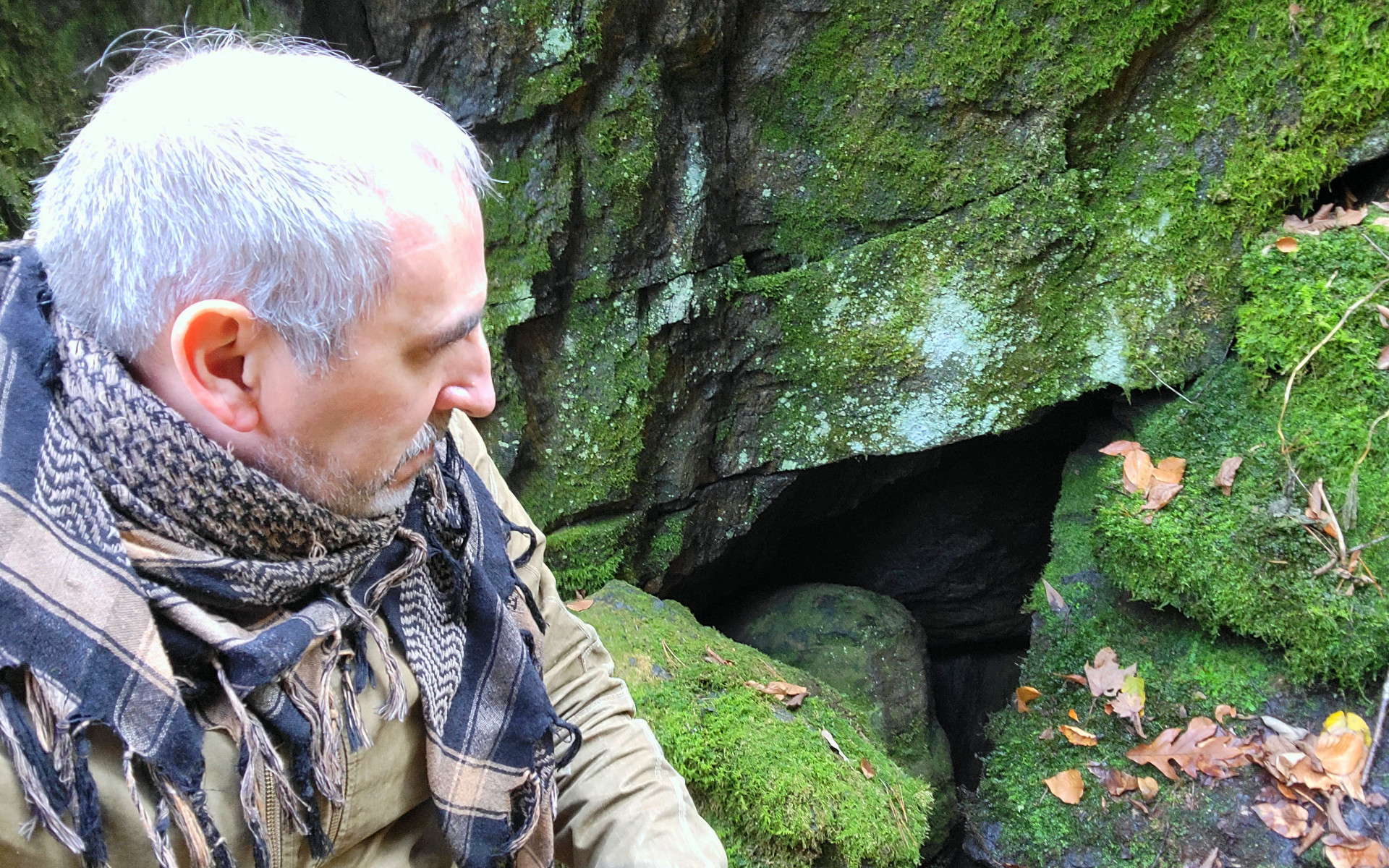
Wolf-Hollow Ice Cave
Wolf-Hollow Ice Cave was known by several other names in the past. I found it mentioned in a variety of publications including the American Journal of Science and Arts by Benjamin Silliman (1824), Glacieres or Freezing Caves by Edwin Swift (1900), Ice Caves and Frozen Wells as Meteorological Phenomenon (1901), and the January-February 1976 issue of The Northeastern Caver. In these publications the cave was said to live in a Connecticut Ice Gorge, Wolf-Hollow or Wolfshollow. .
Wolf-Hollow Ice Cave had been well recognized for what was described as a paradoxical phenomenon that takes place within it. It seems that this cave is known to develop a significant amount of perennial ice. In some cases, it was reported to contain ice until fall. What makes this cave stand out from the typical Ice caves I have visited, is that it possesses a variety of natural conditions that allow it to maintain a temperature below 0 °C (32 °F) in a portion of it for most of, if not all year.
The cave rests in a pit-like recession at the end of a 300-foot-long chasm that travels northeast along a steep fault. This rift averages about 30 feet wide with its narrowest portion only measuring 16 feet wide. Its precipitous walls average 50 feet tall and are flanked on its northwestern side by the very steep slopes of a foothill of Mount Prospect. From its southeastern end to the northwestern end, it slopes downward. The upper half has about a 20-degree incline, while the lower half increases to 31 degrees or more. Just before its conclusion, it slopes again –upward 45 degrees for 30 feet before opening to the wider portion of the gorge that continues for another 500 feet. The cave sits at the end of the steepest incline in the gorge, and at the lowest and narrowest portion, just before its conclusion. The cave slopes to the southwest, burrowing downward, deep into the now buried talus that makes up the floor of this steep gorge.
The deep, narrow, and steep gorge the cave lives in causes cold air to flow downward to a pit at its conclusion during the winter. This cold air is then forced into the cave, down its long and narrow passages, and into the now-buried talus that is honeycombed with small interconnecting passages. This produces a chilling of the rock to a great depth and storing a vast quantity of cold. When warmer weather arrives, the gorge receives little to no direct sunlight. This is due to its narrow and deep shape, along with its southwest to northeast orientation. The fact it is seated on the northeast side of a hill greatly limits it exposure to sunlight. This helps to prevent the now ice-cold rock and trapped water, deep under the gorge from being thawed. As the snow along the nearby hills melt, it drains into the gorge, settling in the cave and buried talus where it is refrozen by the trapped cold temperatures. The pit at the end of the gorge is the final ingredient that helps preserve the icy temperatures long after winter. As the warmer air cascades down the gorge, the difference of barometric pressure in the cave is already venting the cold air out and into the pit. This causes the warmer air to be pushed upward and directly to the conclusion of the narrow part of the gorge. The result is a natural refrigerator that can sustain the colder temperatures for surprisingly long periods of time. In some ice caves like this, the moisture in the summer air settles in the cave and freezes. This can seem very strange for someone to find a cave with icicles hanging on the walls during the warmer months. Though none of the description of Wolf-Hollow Ice Cave mentioned that feature, it does seem well-suited to encourage that feature on occasion..








